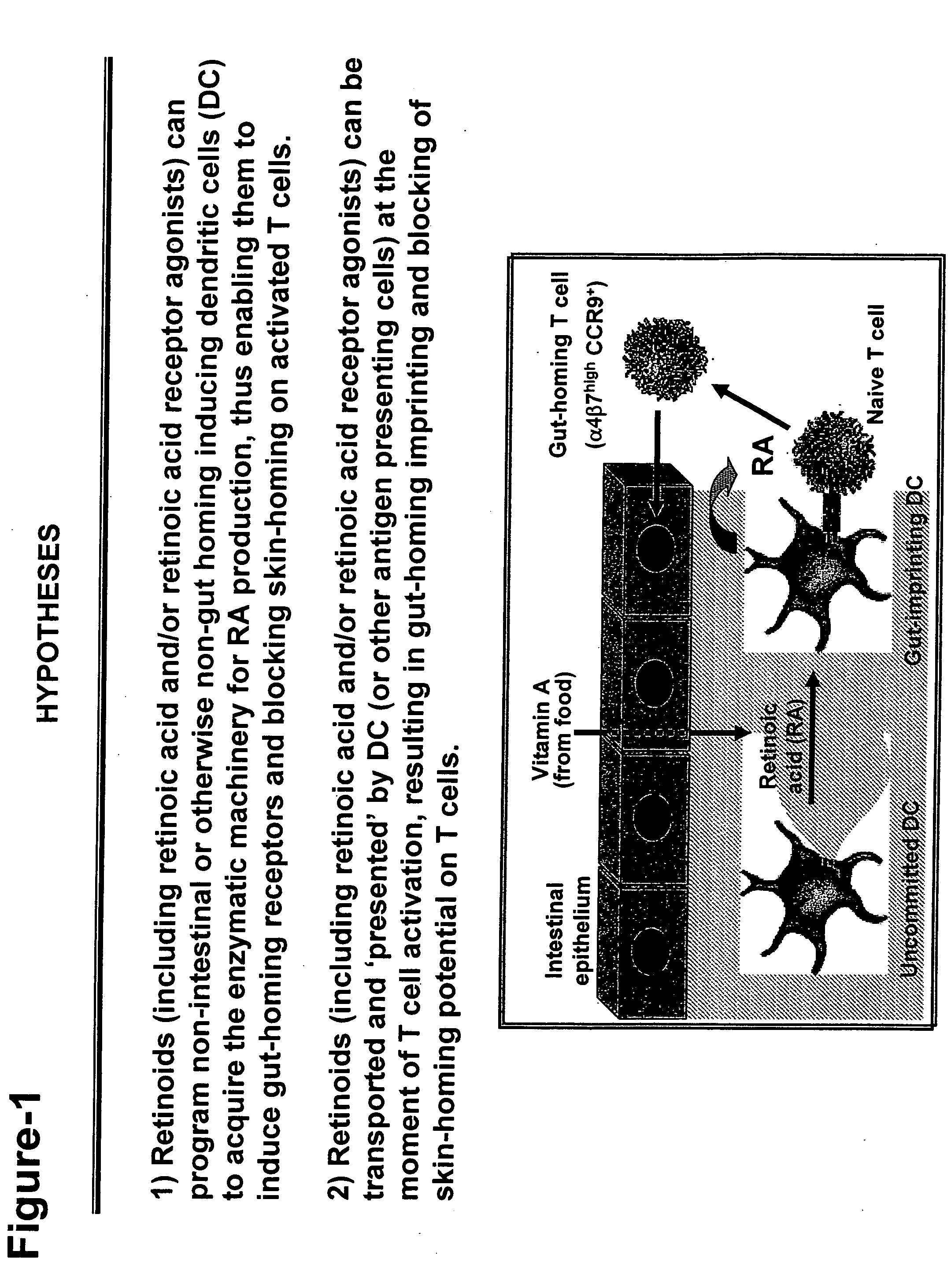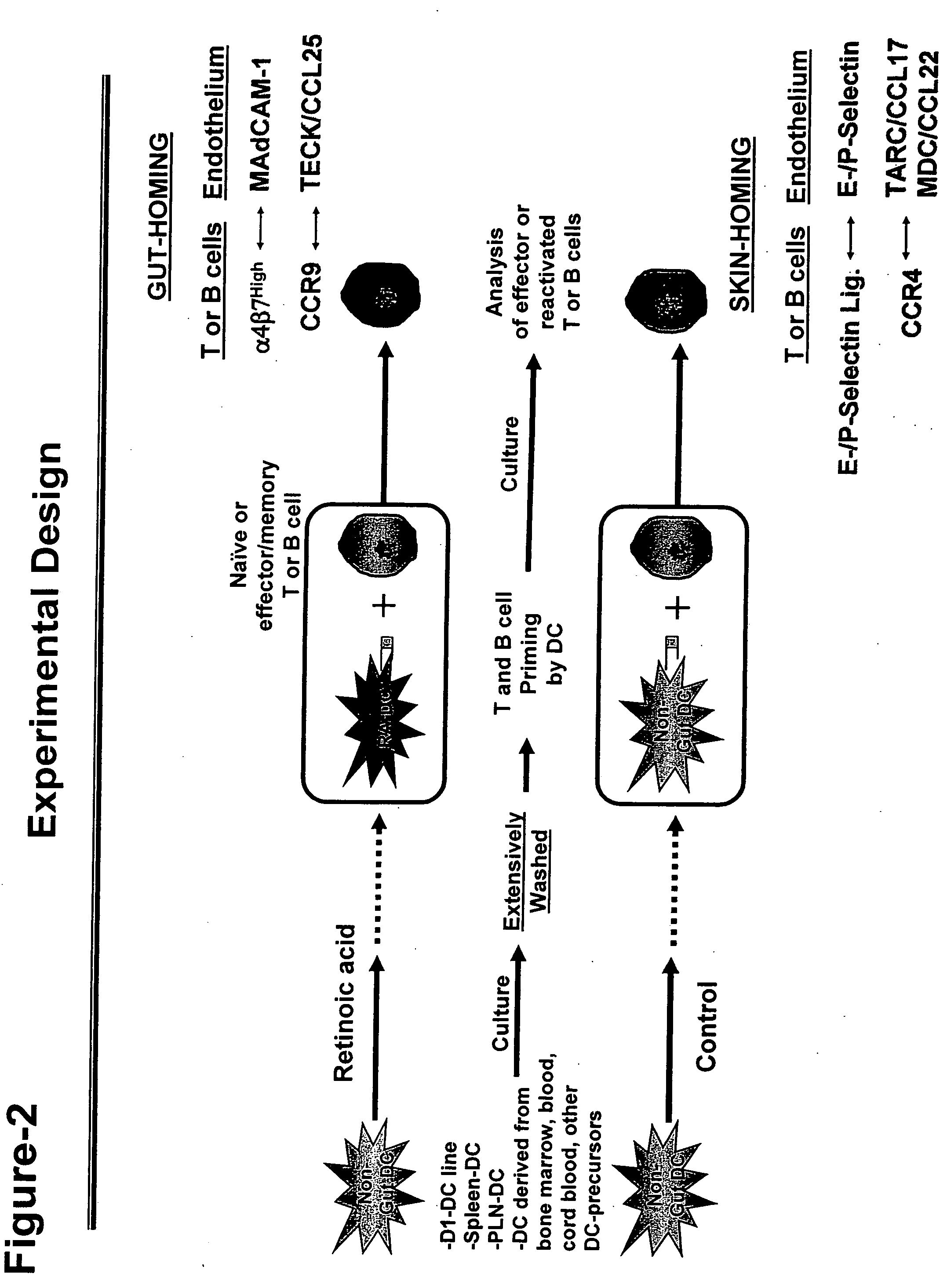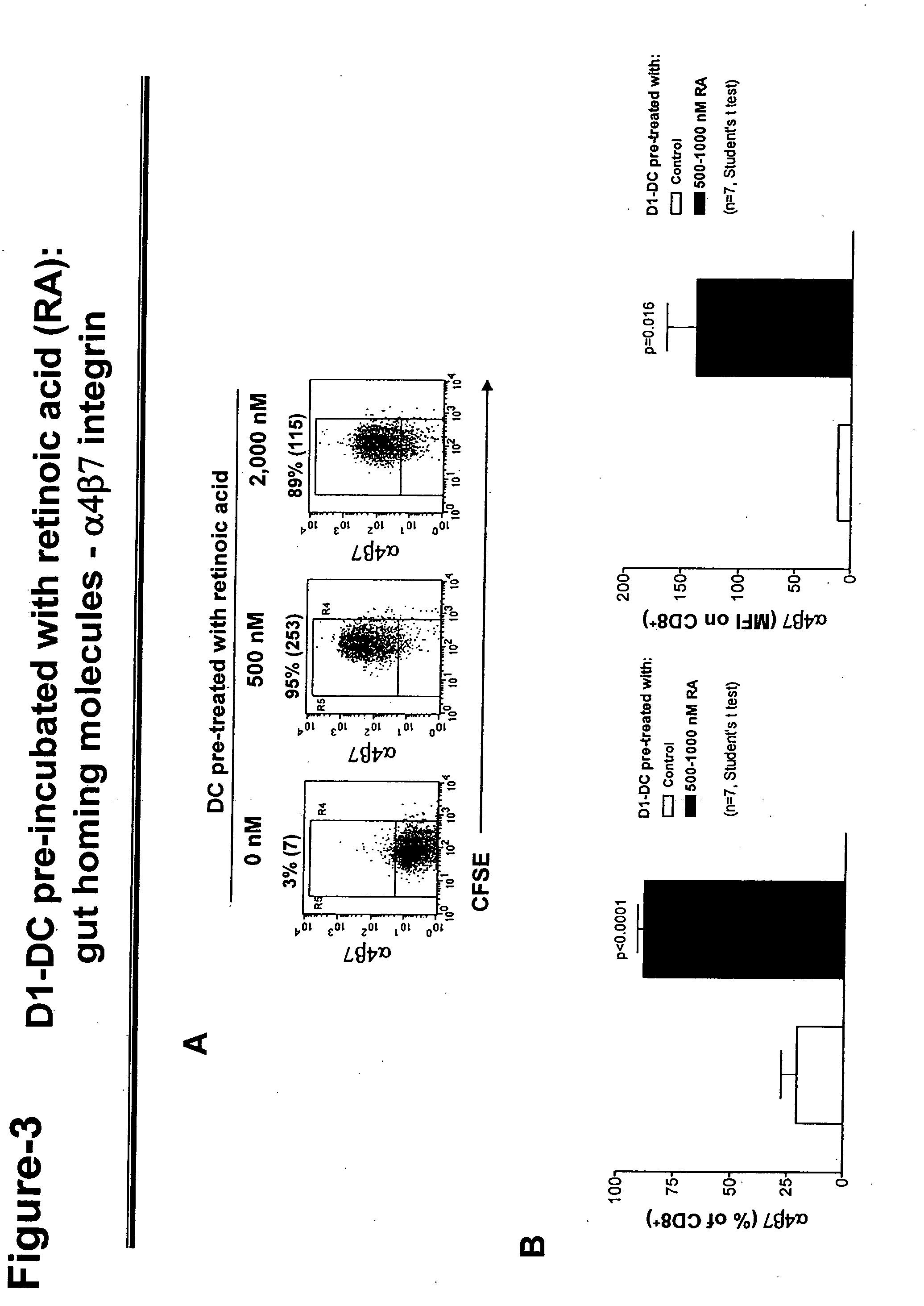Treating gastrointestinal diseases with modulators of retinoic acid
a technology of retinoic acid and modulator, which is applied in the direction of snake antigen ingredients, biocide, antibody medical ingredients, etc., can solve the problems of lack of success, limited success of vaccination approaches currently being developed to treat these infectious agents and intestinal pathogens, and disruption of normal bowel function, etc., to block the upregulation
- Summary
- Abstract
- Description
- Claims
- Application Information
AI Technical Summary
Benefits of technology
Problems solved by technology
Method used
Image
Examples
example 1
Culturing Dendritic Cells with Retinoic Acid (or Retinoid Agonists)
[0100] Dendritic cells (DC) are cultured as shown in FIG. 2. Briefly, non-intestinal DC (e.g. D1-DC: a DC cell line derived from mouse spleen (Winzler et al., J. Exp. Med., 185, pages 317-328 (1997)) is incubated in retinoic acid (RA). After that, the cells are extensively washed, loaded with specific antigen, and used to activate T cells.
[0101] In clinical settings, DC are tested for their ability to induce gut-homing molecules, or to suppress skin homing molecules, in T cellls activated using a standard mixed leukocyte reaction (MLR) assay. For this purpose, DC are generated starting from blood, bone marrow, cord blood or other source of DC precursors, and incubated with peripheral blood mononuclear cells (PBMC), or T cells derived from another donor. T cells are activated in this system by the allogeneic antigens present in the DC from the first donor. Alternatively, PBMC or T cells are stimulated using superant...
example 2
Imprinting T Cells (Including Regulatory T Cells) and / or B Cells (or Their Effector Progenies, Such as Memory B Cells, Plamablasts or Plasma Cells) to Target the Intestine
[0103] Dendritic cells treated with retinoic acid (RA) as described in FIGS. 3-6, or gut derived DC (e.g. mobilized from Peyer's patches or mesenteric lymph nodes), or RA itself (see FIG. 15) can be used to activate naive or effector / memory T and / or B cells. Effector / memory T and / or B cells can also be reprogrammed in their homing commitment when reactivated in a different context (see FIG. 14 and Mora et al., J. Exp. Med., 201, pages 303-316 (2005)). After 4-5 days, the resulting effector T and / or B cells are analyzed for their expression of gut or skin homing molecules and migratory behavior (see FIG. 16).
[0104] Some examples of the clinical settings where this methodology can be used include: [0105] 1. Gut homing T cells and / or B cells (and / or their corresponding effector / memory populations) can be prepared st...
example 3
Immunization Using DC Treated with Retinoic Acid (or Retinoid Agonists)
[0108] Retinoic acid (RA) pretreated DC can be employed to immunize patients through different pathways, e.g. subcutaneously, intraperitonealy or intravenously. This can be a valuable strategy to generate or reprogram immune responses to the gut. Since retinoic acid treated DC also inhibit the expression of skin homing receptors, this approach can also be used to avoid or reprogram immune responses targeted to the skin.
[0109] Some examples of clinical settings where this methodology can be used include: [0110] 1. RA pretreated DC and / or RA or retinoid agonists can be used to formulate or to improve vaccines aimed at treating tumors with gastrointestinal locations, such as, but not limited to, enteric lymphomas, intestinal tumors and gastric tumors. [0111] 2. RA pretreated DC and / or RA or retinoid agonists can be used to formulate or to improve vaccines aimed at treating infections with gastrointestinal location...
PUM
| Property | Measurement | Unit |
|---|---|---|
| retinoic acid | aaaaa | aaaaa |
| retinoic acid receptor | aaaaa | aaaaa |
| liquid absorption | aaaaa | aaaaa |
Abstract
Description
Claims
Application Information
 Login to View More
Login to View More - R&D
- Intellectual Property
- Life Sciences
- Materials
- Tech Scout
- Unparalleled Data Quality
- Higher Quality Content
- 60% Fewer Hallucinations
Browse by: Latest US Patents, China's latest patents, Technical Efficacy Thesaurus, Application Domain, Technology Topic, Popular Technical Reports.
© 2025 PatSnap. All rights reserved.Legal|Privacy policy|Modern Slavery Act Transparency Statement|Sitemap|About US| Contact US: help@patsnap.com



